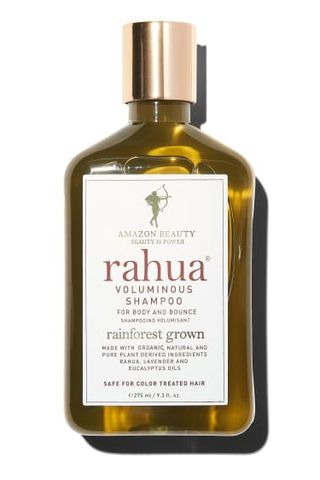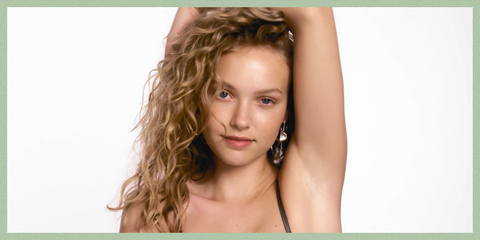Of all the clean beauty categories, “hair care is definitely the least far along,” admits Follain founder, Tara Foley. “That being said,” she adds, “people were saying the same thing about clean skin care and makeup 10 years ago. I've seen the green chemistry and the innovation that's been applied to clean skin care, it's just so amazing. We need a little more time with haircare...it's getting there. It's definitely getting closer.”
Indeed, creating clean haircare is an almost Herculean prospect. A typical shampoo usually contains a mix of surfactants for cleaning, viscosity builders, solvents, chemical conditioning agents, and other components such as fragrance and, eventually, color for commercial appeal. Currently, there are only a few green chemistries that, performance-wise, make your hair feel good; and when it comes to natural ingredients in commercial products, many are derived from processed palm or coconut oil—so they’re “not really natural,” explains cosmetic chemist and Beauty Brains podcast host Perry Romanowski. Not to mention natural ingredients like talc (with its asbestos concerns) and sodium coco sulfate (molecularly similar to sodium lauryl sulfate, even though it's derived from coconuts instead of petroleum) can be toxic. “You have to chemically modify stuff from nature to get a hair product,” explains Romanowski. Indeed, commercially available herbal shampoos are still based on synthetic ingredients, boosted with “natural” raw extracts.
Still, if switching to an all-natural hair care routine seems daunting—or unappealing—there are certain ingredients in conventional hair products that you can slowly start to avoid.
As well as BAZAAR.com’s 11 ingredients to watch out for, hair products can contain things like coal tar (used in dandruff shampoos), ethanolamine (used in styling products), and benzene compounds like toluene (used in hair dyes), which are all associated with health concerns including skin and eye irritation; endocrine disruption; possible carcinogens; and developmental, reproductive, and immune toxicity.
Your Scalp—and Your Nose—is to Blame
The scalp is considered as the most absorbent part of the body, meaning potentially dangerous hair care ingredients could end up in the bloodstream. (The scalp and forehead are actually four times more absorbent than the skin on your forearms.)
In addition to chemical exposure through application to the scalp, the inhalation of some volatile organic compounds (VOCs) during shampoo use is also worrying. Phthalates, which are often found in fragrance, can enter into the system through inhalation, which is then absorbed through the lungs.
Prose is revolutionizing haircare with custom, made-to-order formulas free of parabens, sulfates, phthalates, mineral oils, and GMOs. Prose lists out all ingredients used, with an EWG score next to each, and can offer formulas that are also vegan, silicone-free, dye-free, and fragrance-free. (N.B. The brand does not yet list ingredients used in its fragrances, so we recommend ordering fragrance-free.)
SHOP
Women of Color Face Greater Exposure
Relaxers, hot oil treatments, anti-frizz, leave-in conditioners, and many other styling products marketed specifically to women of color have often been found to contain toxic ingredients, including formaldehyde, phthalates, parabens, cyclosiloxanes, fragrance chemicals, and other endocrine disruptors and asthma-related chemicals. To make matters worse, researchers have found that many of these toxic chemicals aren’t actually listed on the packaging. One study revealed that “compared with white women, women of color have higher levels of beauty product-related environmental chemicals in their bodies, independent of socioeconomic status.”
The Environmental Impact
Once they go down the drain, these chemicals make their way into municipal wastewater before being released into rivers, oceans, and lakes. Research from the European Commission found that using conventional shampoo can contribute to “climate change, water resource depletion, mineral and fossil resource depletion, and freshwater eco-toxicity.”
Other Reasons Your Hair Could be Damaged
Did you know that copper turns hair green—not chlorine? And did you know that there are high levels of copper in your tap water? Pharmaceutical drugs also have an affect: Salt metabolized through medicine can damage hair. These are good things to keep in mind when searching for your ultimate clean haircare routine.
























